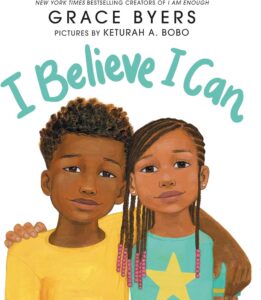Maybe Something Beautiful 2-3 (Dance)

Art Form: Dance
Supplies Needed
Maybe Something Beautiful book
Vocabulary
Level - high, middle, low
Choreography - the sequence of steps and movements in dance or figure skating, especially in a ballet or other staged dance
Movement phrase - a sequence of dance movements making up part of a choreographic pattern, a dance phrase
Choreographer - a person who creates dance
Locomotor - a variety of movements across space (walking, jumping, hopping, crawling, marching, climbing, galloping, sliding, leaping, and skipping)
Instructions
1. After reading the book, talk about how the characters felt in the beginning. How did they feel as they painted? How did they feel at the end of the story?
2. What caused their feelings to change throughout the story?
3. Talk about how people show their emotions with their bodies. Explore showing emotions with your body. How could you use your body to show excitement? Angry? Sad? Tired? Nervous?
NOTE: As students create movements to portray the feelings, point out specifics that help
show the feeling (i.e. excited might be open, up on tippy toes, with arms reaching high;
sad might be closed, arms folded, spine curved down, and knees bent in a low position).
4. Become a choreographer! Tell students that a choreographer is someone who creates a dance. Choose 3 different emotion words to represent feelings from the beginning, middle, and end of the story. Next, create body movements that represent those feelings.
5. Put all the 3 movements together in a movement phrase to retell the story. A movement phrase is a series of movements that are put together. Think about your movement level. Are they low, middle, or high?
Extensions
Add instrumental background music to your choreography.
Have students adjust their choreography to add locomotor movement to one part of their movement phrase.

About
The REimagining and Accelerating Literacy through Arts Integration (REALAI) grant supports the literacy achievement of 3,200 students and 170 teachers, media specialists, and literacy coaches across six schools in Georgia and South Carolina.
In addition to professional learning for educators, this project contributes significantly to school library collections through the purchase of developmentally appropriate and culturally relevant books.
This grant also includes parent events to provide families with access to books and other content about how to support their child’s reading development.


